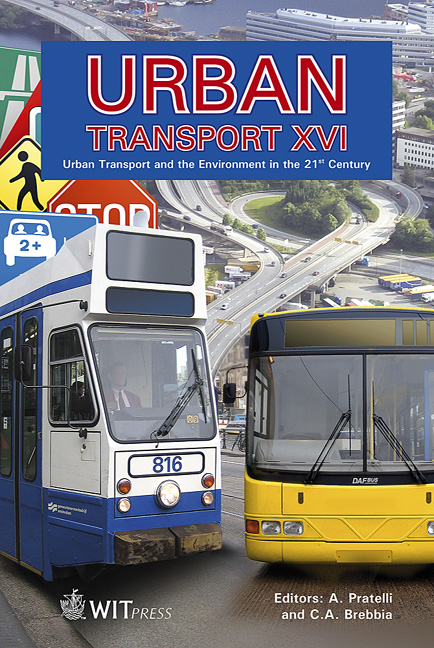Pedestrian Risk Perception In Signalized Street Crossings
Price
Free (open access)
Transaction
Volume
111
Pages
9
Page Range
103 - 111
Published
2010
Size
468 kb
Paper DOI
10.2495/UT100101
Copyright
WIT Press
Author(s)
N. Eliou, A. Galanis & A. Proios
Abstract
This paper examines the pedestrian perception of risk and behaviour in signalized street crossings with a flashing green beacon, while, simultaneously, the cars turn right or left with a flashing orange beacon. The pedestrians have right of way in situations like that. However, it is not always implemented by the drivers. As a result, the risk of the pedestrian crossing is raised, as they are forced to cross the street even in the red signalized phase. This study took place in the Greek city of Volos in December 2008. 2024 pedestrians were examined with the use of a video camera in two signalized intersections in the center of the city. During the elaboration of the data, the pedestrians were separated by sex, age and, while crossing the street, whether they were alone or in a group. The study presents the pedestrian behaviour and perception of risk as they wait to cross the street, either on the sidewalk or in the street and the choice of crossing the street either with a green or red light. It also, examines the cases where the drivers stopped to give right of way to the pedestrians. Keywords: pedestrian risk perception, pedestrian safety, pedestrians’ behaviour, drivers’ behaviour, signalized crossing. 1 Introduction Pedestrian risk perception and behaviour of crossing the street is a critical issue for their road safety. Pedestrian crosswalks are either signalized or not. Pedestrians do not always cross with the \“walk” signal, but they cross the street many times when they consider these is a gap in the flow of the cars. This behaviour raises the risk, as they are vulnerable road users.
Keywords
pedestrian risk perception, pedestrian safety, pedestrians’ behaviour, drivers’ behaviour, signalized crossing





